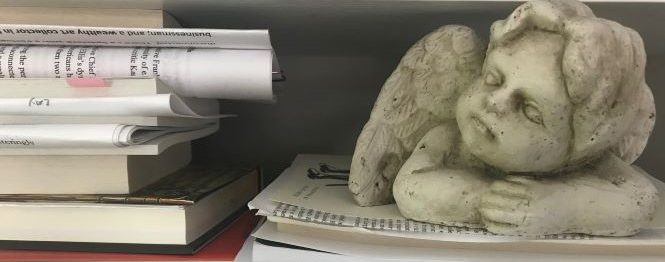These two books couldn’t be more opposite in purpose, but they both drive addictive page-turning with immersive narratives. I’ll start with Jonathan Freedland’s new nonfiction about the escape by 19-year-old Rudolf Vrba and fellow prisoner Fred Wetzler from the infamous Nazi concentration camp, Auschwitz, on April 10, 1944.

They were the first Jews to successfully escape the intensely guarded facility. With fascinating and at times breathtaking storytelling, Freeland recounts how it came about, detailing Vrba’s two-years in the camp between 1942 and 1944, during which he figured out its heinous purpose. The turning point arrives when Vrba, with his scientific mind that comprehended strategies and patterns, understood the orchestrated Nazi deception of resettlement (or “disinformation” as we would say today). He saw how the false information, that Jews were being transported to new homes, allowed the Nazis to keep them under control, following orders onto and off the trains. He witnessed this first hand working on the ramp where the trains arrived, overcrowded with Jews destined for annihilation. Vrba knew he needed to escape to disprove the illusion with the facts, and alert the world.
The eleven nights of walking to safety tell a harrowing survival story. At the end of it, Slovakian partisans and citizens helped the two escapees with new identities and hiding places. The Vrba-Wetzler Report about the concentration camp made its way to the U.S. War Department and President Roosevelt and Prime Minister Churchill’s desks. With Vrba’s photographic memory, it captured the layout and operational details of the camp, and thus an indisputable document about the Auschwitz-Birkenau complex. Responses to the report were not as swift and trusting as Vrba hoped: bureaucratic roadblocks thwarted a crucial warning to Hungarian Jews soon to be deported.
Of course he would have been delighted that his words had reached a British prime minister and a president of the United States, but neither Churchill nor Roosevelt was his prime intended audience. The people he wanted to warn were his fellow Jews.
It bears mentioning that Mr. Freedland is a Guardian columnist and former foreign correspondent. He’s also the author of nine thrillers. That’s a powerful combination, which here results in meticulously researched historic details merged with edge-of-your-seat drama. He writes as compellingly about the escape as he does of the post-war years when Vrba testified in Nazi war crime trials, settled in England, and then eventually in British Columbia — essentially, the how and why and what of his life that remained affected by the escape and the report. Also, Freedland considers why we don’t know the name Rudolf Vrba like we know Anne Frank or Oskar Schindler. The seventeen-year-old boy in The Escape Artist who entered Auschwitz was Walter Rosenberg. The book explains how he became Rudolf Vrba. He died March 27, 2006.
Now for a delightfully absorbing whodunnit that’s so marvelously twisty and smart its world becomes yours. Think Alice tumbling into the Wonderland. This many-layered mystery grabs on with its fast-paced plot, caper-ish events, and breezy narrative style. The wild ride never lets up.

So here’s the premise of The Enigma of Room 622: The largest private bank in Switzerland owned by the Ebezner family will be announcing it’s new president at their December Gala. It should be Abel Ebezner’s son Macaire; however Abel, before his death, changed the tradition of handing the presidency to the son to an appointment by the board of directors. Fifteen years ago, Macaire sold his shares in the bank to Sinior Tarnogol, a mysterious wealthy man with ominous intentions. Why Macaire did that is one grain of sand in this hourglass of upturned cascading events, and a reason his father made the change. The board is likely to give the presidency to the hardworking, solitary wealth manager, Lev Levovitch. Macaire, compared to Lev, is a slacker, but then no one knows Macaire is working for Swiss Intelligence on the side. He’s married to the beautiful Anastasia, who 15 years ago fell in love with Lev when he was a poor baggage handler at the Hôtel de Verbier, but Anastasia’s mother required her daughter to marry money. The setting is Geneva, Switzerland, and the luxury Hôtel de Verbier on its outskirts, where the Gala is being held. The murder mystery builds up to the Gala weekend, and we don’t even know who the victim is for quite a while, but it’s pretty evident Macaire is determined to be president at all costs.
Every character turns out to be not who they appear to be, which author Joël Dicker pulls off with perfect puzzle-creating credibility. It seems he’s having a bit of fun, too, as he tips his hat to Alfred Hitchcock and writes himself into the story. A prominent Swiss novelist named Joël decides to sooth his broken heart from a recent breakup and ditch the hard work of his current novel-in-progress with a visit to the Hôtel de Verbier. He’s given Room 621 and notices there’s no Room 622, rather 621A. With another guest, Scarlett, he digs into the why of it and solves the murder mystery of Room 622.
Occasionally, the prose feels like we’re reading in the 20th century’s golden age of crime writing, where subtlety didn’t play, which makes it even more fun. Here are some lines from the night of the murder in this book that kept me in the dark until the very end.
There was a noise. Light escaped from beneath the door. The occupant got out of bed. Then steps could be heard inside the room. The shadow put a finger on the trigger of the weapon. When the door opened, it would have to fire — and aim well. Death was getting ready to strike.
Well, I loved it.
